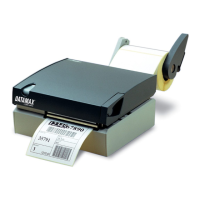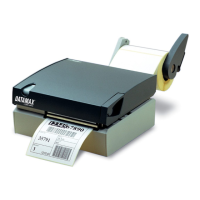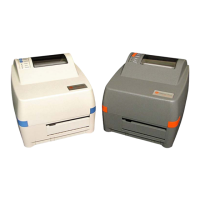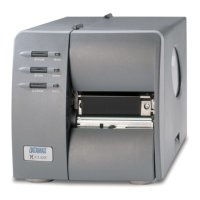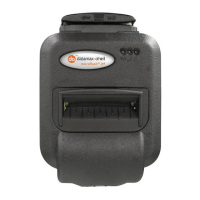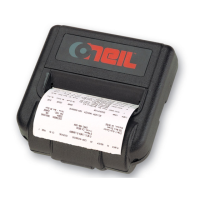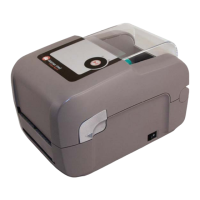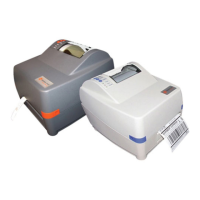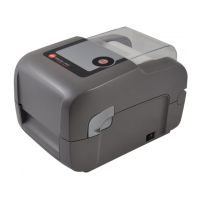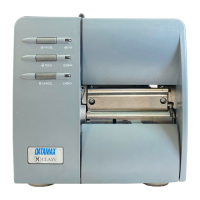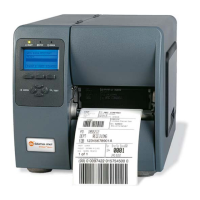Label Formatting Command Functions
Class Series 2 Programmer’s Manual 137
T Set Field Data Line Terminator
This command, intended for use with record types that accept binary data (e.g.,
PDF417), allows binary control codes (e.g., a carriage return) to be embedded in the
printed data by setting an alternate data line terminator. Valid only for the next format
record, the terminator then defaults back to the carriage return.
Syntax:
Tnn
Where:
nn
-
Is an ASCII two-character representation of a HEX
code to be used for the end of data terminator.
Sample:
<STX>L<CR>
T00<CR>
191100200000000TEST<NULL>
141100001000100TERMIATOR<CR>
Q0001<CR>
E<CR>
The sample above sets the a NULL terminator (ASCII NULL: HEX
00) for the data line termination code. The terminator is
immediately restored to a carriage return <CR>, as seen in the
format record containing the text “TERMINATOR”.
U Mark Previous Field as a String Replacement Field
This command controls the formatting of replacement data. Specifying a field as a string
replacement for dynamic, not static, fields will optimize throughput. See <STX>U.
Syntax:
U
Sample:
<STX>L
D11
121100001000000123456789012<CR>
U<CR>
1211000020000001234567<CR>
U<CR>
161100000000000Sample<CR>
1X1100000000000B250250002002<CR>
Q0001
E
<STX>U01ABCDEFGHIJKL<CR>
<STX>U028901234<CR>
<STX>G
The sample above sets the format for register loading and prints
two labels. The first two of four format records have been
designated replacement fields. The second label is generated with
System-Level field-replacement commands and printed.
The length of the original string sets the data string length of any replacement; both
must be equal. The data being used when created must be valid for the font type being
selected.

